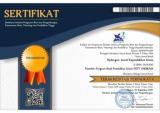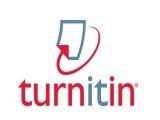Formulation and Evaluation of Dishwashing Soap Based on Eichhornia crassipes Activated Carbon as an Environmentally Friendly Cleanser
Abstract
Keywords
Full Text:
PDFReferences
Ananpreechakorn, W., & Seetawan, T. (2021). Synthesis and characterization of activated carbon from water hyacinth. Journal of Physics: Conference Series, 2013(1). https://doi.org/10.1088/1742-6596/2013/1/012025
Arrazi, M. M., Nisah, K., & Arfi, F. (2021). Karakterisasi Sabun Cair Cuci Piring dengan Variasi Konsentrasi NaCl. Amina, 3(3), 136–140.
Atesci, Z. C., & Inan, H. (2023). Removal of microfiber and surfactants from household laundry washing effluents by powdered activated carbon: kinetics and isotherm studies. Water Science and Technology, 88(6), 1578–1593. https://doi.org/10.2166/WST.2023.281/1287028/WST2023281.PDF
Diana, V. E., Abadi, H., & Andry, M. (2024). Formulation and Effectiveness Test of Liquid Soap from Siam Weed (Chromolaena odorata (L.) Leaves Ethanol Extract Against Staphylococcus aureus. Jurnal Biologi Tropis, 24(4), 835–847. https://doi.org/10.29303/JBT.V24I4.7981
Dipaningrum, P. K., Ulfa, A. M., & Khoirunnisa, S. M. (2021). Penetapan Kadar Alkali Bebas Pada Sabun Cuci Krim Yang Dijual Di Mini Market Secara Asidimetri. Jurnal Analis Farmasi, 6(2), 130–135. https://doi.org/10.33024/jaf.v6i2.5956
Do, D. N., Dang, T. T., Le, Q. T., Lam, T. D., Bach, L. G., Nguyen, D. C., & Toan, T. Q. (2019). Extraction of saponin from gleditsia peel and applications on natural dishwashing liquid detergent. Materials Today: Proceedings, 18, 5219–5230. https://doi.org/10.1016/j.matpr.2019.07.522
Fatkhurrachman, F., Avidlyandi, A., Nurhasana, D., Erliana, D., Sari, M. E., Banon, C., Wibowo, R. H., & Adfa, M. (2023). Liquid Soap with Active Ingredients of Methanol Extract of Sambang Darah Leaves (Excoecaria cochinchinensis L.): Formulation, Characterization, and Antibacterial Activity. Stannum : Jurnal Sains Dan Terapan Kimia, 5(1), 15–23. https://doi.org/10.33019/JSTK.V5I1.3845
Fernandes, A. P. M., Ferreira, A. M., Sebastião, M., Santos, R., Neves, C. M. S. S., & Coutinho, J. A. P. (2022). First Stage of the Development of an Eco-Friendly Detergent Formulation for Efficient Removal of Carbonized Soil. Molecules, 27(21). https://doi.org/10.3390/MOLECULES27217460
Galgali, P., Palimkar, S., Adhikari, A., Patel, R., & Routh, J. (2023). Remediation of potentially toxic elements -containing wastewaters using water hyacinth – a review. International Journal of Phytoremediation, 25(2), 172–186. https://doi.org/10.1080/15226514.2022.2068501
González-García, P., Gamboa-González, S., Andrade Martínez, I., & Hernández-Quiroz, T. (2020). Preparation of activated carbon from water hyacinth stems by chemical activation with K2CO3 and its performance as adsorbent of sodium naproxen. Environmental Progress & Sustainable Energy, 39(3). https://doi.org/10.1002/EP.13366
Hendrasarie, N., & Redina, C. (2023). Ability of Water Lettuce (Pistia stratiotes) And Water Hyacinth (Eichhornia crassipes) To Remove Methylene Blue Anionic Surfactant (MBAS) From Detergent Wastewater. Nature Environment and Pollution Technology, 22(4), 1961–1970. https://doi.org/10.46488/NEPT.2023.v22i04.022
Isnawati, N. (2020). Formulation and Effectiveness Test of Eschericia coli Bacteria Organic Liquid Soap Preparations Aloe Vera Leaf (Aloe Vera Linn). Health Media, 1(2), 45–49. https://doi.org/10.55756/HM.V1I2.39
Laksana, Oktavillariantika, Pratiwi, Wijayanti, & Yustiantara. (2017). Optimasi Konsentrasi Hpmc Terhadap Mutu Fisika Sediaan Sabun Cair Menthol. Jurnal Farmasi Udayana, 6, 1–22.
Lakshmipurada, S., REDDY, K. R., & Sundaravel, S. (2021). Synthesis and Characterization of Activated Carbon/ZnO Nanocomposite from Water Hyacinth for Heavy Metals Adsorption and its Antimicrobial Activity. Asian Journal of Chemistry, 26(12), 70–73.
Masakul, P., Nilmoung, S., Sonsupap, S., & Laorach, L. (2023). The electrochemical properties of water hyacinth-derived activated carbon. Journal of Metals, Materials and Minerals, 33(3), 2–7. https://doi.org/10.55713/jmmm.v33i3.1618
Maulina, W., Kusumaningtyas, R., Rachmawati, Z., Supriyadi, Arkundato, A., Rohman, L., & Purwandari, E. (2019). Carbonization Process of Water Hyacinth as an Alternative Renewable Energy Material for Biomass Cook Stoves Applications. IOP Conference Series: Earth and Environmental Science, 239(1). https://doi.org/10.1088/1755-1315/239/1/012035
Maysarah, H., Desiyana, L. S., Nurzuhra, S., & Illian, D. N. (2023). Utilization of Spent Arabica Coffee Grounds as Raw Material for Activated Charcoal in Liquid Bath Soap Formulation. Pharmaceutical Sciences and Research, 10(1). https://doi.org/10.7454/PSR.V10I1.1282
Morales S, L., Baas-López, J. M., Barbosa, R., Pacheco, D., & Escobar, B. (2021). Activated carbon from Water Hyacinth as electrocatalyst for oxygen reduction reaction in an alkaline fuel cell. International Journal of Hydrogen Energy, 46(51), 25995–26004. https://doi.org/10.1016/j.ijhydene.2021.04.094
Nababan, B. P., Mulmeyda, R., & Insyani, N. P. (2024). Utilization of Used Cooking Oil in Making Liquid Soap with the Addition of Water Hyacinth ( Eichhornia crassipes ) Leaf Extract as an Antibacterial. Chemistry and Materials, 3(2), 64–70.
Nafisyah, E., Arrisujaya, D., & Susanti, E. (2022). The utilization of water hyacinth (Eichhornia crassipes) harvested from the phytoremediation process as activated carbon in Cr(VI) adsorption. IOP Conference Series: Earth and Environmental Science, 1211(1). https://doi.org/10.1088/1755-1315/1211/1/012019
Nisa, K., Ringo, L. S., Aulia, M. R., Alfizar, Inayatillah, & Kurniasih, E. (2025). Peningkatan Pengetahuan Kewirausahaan Siswa Di Dengan Pelatihan Pembuatan Sabun Cuci Piring Cair Improving Entrepreneurship Knowledge Of Students In Meulaboh State Vocational High School 3 With Liquid Dishwasher Soap-Making Training. Jurnal Pengabdian Kepada Masyarakat Wisdom, 2(1), 190–197.
Nurhadi, M., Widiyowati, I. I., Wirhanuddin, W., & Chandren, S. (2019). Kinetic of Adsorption Process of Sulfonated Carbon-derived from Eichhornia crassipes in the Adsorption of Methylene Blue Dye from Aqueous Solution. Bulletin of Chemical Reaction Engineering & Catalysis, 14(1), 17–27. https://doi.org/10.9767/BCREC.14.1.2548.17-27
Nurhayati, O. D., Situmorang, I. M. B., & Rahayu, F. E. (2023). Formulation and evaluation of liquid soap preparation of robusta green coffee extract (Coffea canephora) with virgin coconut oil (VCO) base as an antibacterial Staphylococcus aureus. Jurnal Pendidikan Kimia, 15(3), 214–220. https://doi.org/10.24114/JPKIM.V15I3.50078
Okkyana, K. P., Chusun, C., & Lisawati, T. (2023). Edukasi Pembuatan Sabun Cuci Piring Cair sebagai Peluang Wirausaha bagi Ibu-Ibu disekitar Kampus. Jurnal Abdi Masyarakat Kita, 3(2), 164–177. https://doi.org/10.33759/ASTA.V3I2.428
Ratnani, R. D., Ariyaningrum, A. Y., & Maharani, F. (2022). Wastewater Treatment Bakery Using Active Carbon Of Water Hyacint And Boiler Waste. Journal of Chemical Process and Material Technology, 1(2), 27. https://doi.org/10.36499/JCPMT.V1I2.7117
Rofikoh, V., Zaman, B., & Samadikun, B. P. (2023). The Potential of Commercial Biomass-Based Activated Carbon to Remove Heavy Metals in Wastewater – A Review. Jurnal Ilmu Lingkungan, 22(1), 132–141. https://doi.org/10.14710/JIL.22.1.132-141
Silvia Sianiar, D., Gede Ratna juliasih, N. L., & Abadi Kiswandono, A. (2021). Pembuatan Sabun Cair Cuci Piring Berbasis Surfaktan Sodium Louryl Sulfate. Analit:Analytical and Environmental Chemistry, 6(02), 188–196. https://doi.org/10.23960/aec.v6.i2.2021.p188-196
Sriwening, P. I., & Susanti, M. M. (2022). Kualitas Mutu Sabun Cair Organik Berbahan Dasar Minyak Jarak Dan Soda Qie. Indonesian Journal on Medical Science, 9(2), 155–160. https://doi.org/10.55181/ijms.v9i2.370
Weerasuk, B., Chutimasakul, T., Prigyai, N., Nilgumhang, K., Kaeopookum, P., & Sangtawesin, T. (2024). Structural and Electrochemical Evolution of Water Hyacinth-Derived Activated Carbon with Gamma Pretreatment for Supercapacitor Applications. Materials, 17(13). https://doi.org/10.3390/MA17133233
Wu, H. Y., Shih, C. L., Lee, T., Chen, T. Y., Lin, L. C., Lin, K. Y., Chang, H. C., Chuang, I. C., Liou, S. Y., & Liao, P. C. (2019). Development and validation of an analytical procedure for quantitation of surfactants in dishwashing detergents using ultra-performance liquid chromatography-mass spectrometry. Talanta, 194, 778–785. https://doi.org/10.1016/J.TALANTA.2018.10.084
DOI: https://doi.org/10.33394/hjkk.v13i3.16034
Refbacks
- There are currently no refbacks.

This work is licensed under a Creative Commons Attribution-ShareAlike 4.0 International License.





